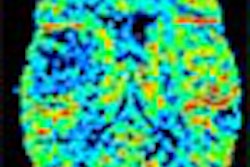ATLANTA - Using radiation source trains that are roughly double the size of the target lesions, brachytherapy can prevent stenosis following treatment for in-stent restenosis even in lesions that are as long as 30 mm, according to a report at the 2002 American College of Cardiology meeting.
"The use of longer sources seems to improve the outcomes regarding major acute coronary symptoms, in-stent restenosis, and total occlusions despite longer lesions," said Dr. Sigmund Silber, professor of medicine at the University of Munich in Germany.
Reporting results from the European Registry Novoste Trial (RENO), Silber said 1,098 patients fell into the category of having in-stent lesions greater than 15 mm in length. In order to prevent restenosis outside the stent, Silber said the researchers followed the "rule of 2," essentially doubling the Novoste Beta-Cath radiation train to deal with the target lesion.
For the 181 lesions that averaged about 15.5 mm, the doctors employed a 30-mm radiation train; for the 869 patients whose lesions averaged 19.1 mm, a radiation train of 40 mm was used; and for the 49 patients with extra-long lesions that averaged just over 30 mm, a 60-mmradiation train was used.
The patients in the long-lesion study of the Novoste registry averaged about 62 years of age, and about three-quarters of the patients were men. Although the study’s protocol allowed for brachytherapy of both de novo and restenosis, the vast majority of the lesions treated (70%-80%) were in-stent blockages.
Silber said that angiographic restenosis at six months was 27.7% in the patients treated with the 30-mm train, but the restenosis rate dropped to 24.1% if the patient was treated with the 40-mm train. The restenosis rate after six months was 16.7% in patients who received the 60-mm radiation train.
The rate of total occlusion of the target vessel was 7.9% for patients who had the 30-mm train; 5.3% for those with the 40-mm train; and 3.2% for patients who received the 60-mm train. At six months, major acute coronary events occurred in 20.4% of patients who were treated with the 30-mm train. The rate was 18.6% if treated with the 40-mm radiation source train, and 12.2% if treated with the 60-mm train, Silber said.
"We know that we can treat longer in-stent lesions with longer radiation trains," commented Dr. Richard Heuser, an interventional cardiologist with the Phoenix Heart Center in Arizona. "We believe now that we can get better results by irradiating an area about 5 to 10 millimeters beyond the area of restenosis. The length of the radiation source is limited only by the anatomy of the blood vessel."
By Edward SusmanAuntMinnie.com contributing writer
March 18, 2002
Related Reading
Radiation proves robust for preventing in-stent restenosis, August 10, 2001
Gamma radiation reduces in-stent restenosis rate in saphenous vein grafts, March 20, 2001
Primary intracoronary brachytherapy may avert restenosis, January 25, 2001
External beam radiotherapy to prevent restenosis being studied at higher doses, September 27, 2000
Copyright © 2002 AuntMinnie.com



















